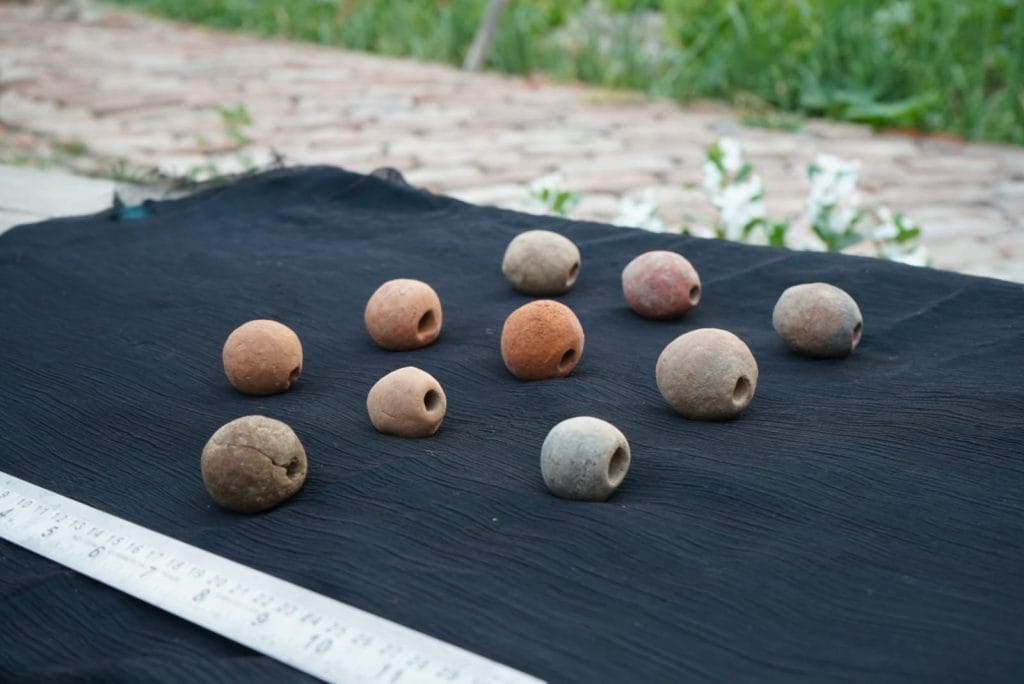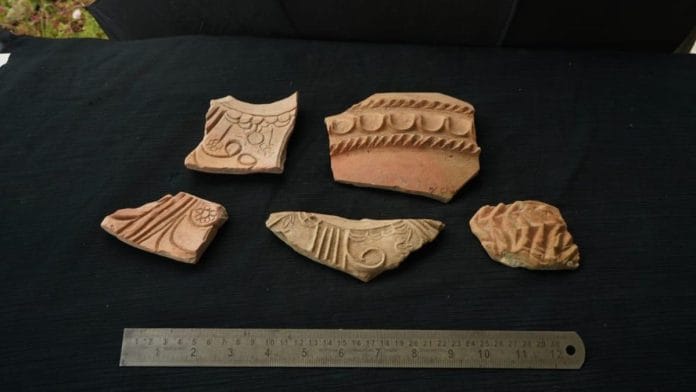New Delhi: After a four-hour journey via ferry, archaeologist Phanikant Mishra reached a fisherman’s house in Govardhanpur, Sunderbans. He was thrilled to see his antiquities collection. This trip also made Mishra the first archaeologist to have spent two days in the delta region, exploring at length different islands such as Pratgarpratima, Ramganga, and Govardhanpur. He went looking for habitational archaeological evidence.
“Everything has been kept in gunny bags. I was excited to see some of the antiquities dating back to the prehistoric age with animal fossils, skeletons, bone fragments and potteries of different eras,” said Mishra, veteran archaeologist and former eastern zone regional director, Archaeological Survey of India. He has come back with photographs of more than 90 antiquities.
According to Mishra, no trained archaeologist has ever explored this region in detail, as it is very difficult to reach. ASI officials confirmed Mishra’s exploration on 19 and 20 May is unique because of the depth of his examination.
For decades, Sunderban has been home to amateur archaeologists who collect antiquities and register their residences as mini museums. Despite historians underlining the need for exploration, the ASI never formally documented or explored the region. But it has informally identified around 20 sites of interest in the Sundarbans. In 2013, the West Bengal archaeology department started some exploration, but it didn’t take off. The surveys in this region can change its historiography beyond the British legacy.
“Reaching these places was not an easy task. Sunderban is a virgin area; not much work has been done here. After spending two days here, it seems that civilisation existed here for a long time,” said Mishra, who first visited the mangrove forests in 2016 but wasn’t able to explore the sites in detail.

During his visit, iLEAD’s technical staff accompanied Mishra, along with the Divisional Forest Officer, Ramganga. The Institute of Leadership, Entrepreneurship and Development is an educational institution based in Kolkata that is supporting the archaeologist’s exploration.
Mishra said cord-impressed pottery, cattle skull, barrel-shaped bead, iron slag, pestles, and a ritualistic stone tablet are among the artefacts that were never identified by a subject matter expert before. Local fisherman collected them, but they did not know their significance. The terracotta, dating back to pre- and early centuries of the Common era, was studied and photographed. The terracotta lumps bearing impressions of seals date back to the early historic period.
“The findings are excellent, and the variety is impressive. Some seem to be earlier than the CE era, which indicates the existence of an ancient civilisation in the mangroves dating back to the Mauryan period,” said Mishra, adding that the civilisation lasted for more than 500 years.
Mishra said that similar antiquities are found at other historical sites such as Kaushambi, Ahichatra and Chandraketugarh. “We get the reference of Sundarban in Greco-Roman texts,” he claimed, adding that the antiquities found here are from the Mauryan, Shunga, later Shunga and Kushan era. He even found evidence of some burnt bricks, which are from the Gupta era. He said terracotta objects such as beads and coins are prominent findings.
Also read: Ancient Nalanda University ruins is now Bihar’s new destination wedding spot
A difficult terrain
Mishra is intrigued by the missing link between the early Sundarban civilisation and modern human settlements.
“It is a matter of mystery how the civilisation suddenly disappeared. This is the matter of study,” he said, adding that during his visit, he saw many British-era buildings there, which suggests the presence of the British in this region.
In 1764, under the East India Company, the Sunderbans were mapped for the first time. With the formation of the forest department in the 1860s, it came under formal government administration.

The archaeologist said he did not find any reports by the British on Sundarban’s archaeological importance.
“It’s very surprising for me as they were good recorders,” he said, adding that even for them, the Sundarbans was a challenging region, with its dense mangrove forests, man-eating animals like Royal Bengal Tigers.
He also said that British documents suggest the presence of some shipwrecks. “For now, it is evident that this region is archaeologically important,” he said
Mishra recalled his 2016 visit when he met a fisherman, Biswajit Sahu, who has passionately collected artefacts for many decades.
“He wears a hat and lives with full swag. He is the hero of his area,” said Mishra.
(Edited by Theres Sudeep)






